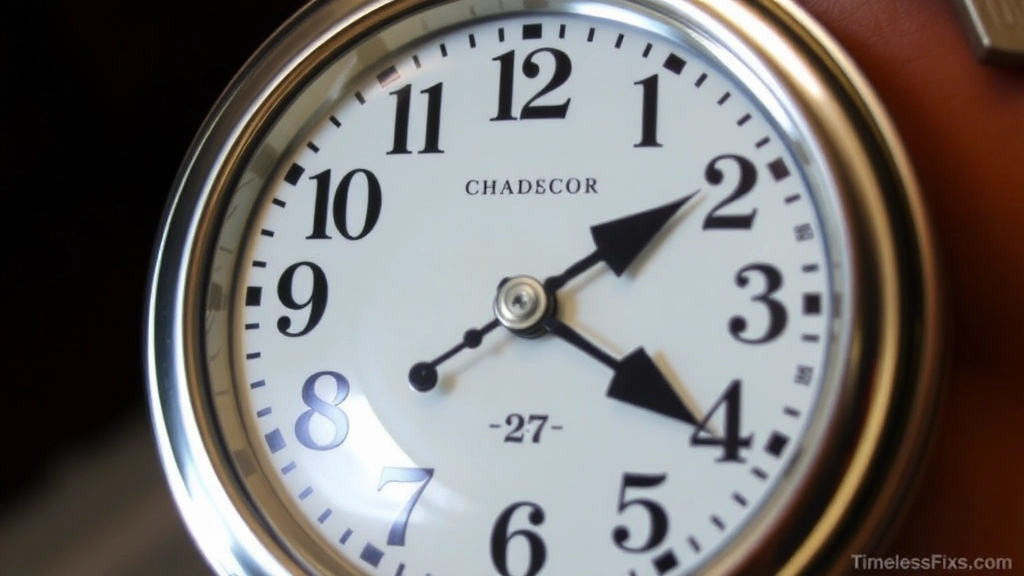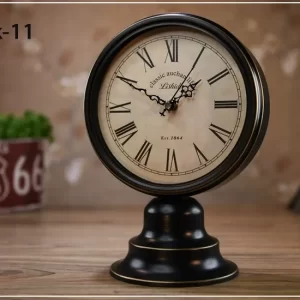Timeless Repair: Basic Tips for Tic Toc Clock Repair
Mantle Clock Studio
Welcome to the fascinating world of the Mantle Clock Studio, where every rhythmic tick tells a story of precision, elegance and timeless artistry. Today, we’re sharing “Timeless Restoration: Ticking Clock Repair Essentials,” a must-read guide for watch enthusiasts and proud guardians of these mechanical marvels. Whether you’re restoring an old mantelpiece, fine-tuning an heirloom, or troubleshooting a stubborn timepiece, our expert tips will get your clock running perfectly again.
So roll up your sleeves, grab your trusty toolkit, and let’s learn the fascinating craft of ticking clock repair. From fine adjustments to practical maintenance strategies, we have everything you need to keep the hands of your clock moving with ease.
Keeping your mantel clock ticking: top maintenance tips
A meticulously maintained clock is more than just a chiming device; it’s a central element that adds character and coziness to your home. In order to keep your mantel clock running smoothly, it’s vital that it’ s meticulously maintained on a regular basis. Here are some expert-approved maintenance tips to help keep your clock charming and functional:
-
Dusting: the first line of defense
Dust is the mortal enemy of clocks. It can creep into complex mechanisms, causing gears to slow down or even jam. Removing annoying dust is easy with a soft-bristled brush or a gentle blast of air (a hair dryer set to a low temperature is sufficient). Regular cleaning will keep your ticking clock in top condition. -
Lubrication: less is more
Applying clock oil is essential, but don’t overdo it! A single drop on the key shaft is sufficient. Excessive oiling attracts dust, so it should be kept to a minimum. Remember, the key to clock maintenance is precision. -
Harmonious environment
Clocks thrive in a stable environment. Too much humidity can lead to rust, while too dry an environment can cause wood parts to crack. Keep your MantelClock Studio timepiece in tip-top shape by keeping the temperature and humidity at the right level. -
Placement is important
Keep your clock out of direct sunlight, high-traffic areas, or areas prone to vibration. This helps prevent accidental shocks and ensures that your ticking clock remains accurate and intact. -
Wind your clock gently
Technique is key when winding your clock. Avoid forcing it – if you encounter resistance, you may need a professional to handle it. Smooth, controlled winding keeps the gears turning like clockwork.
Mastering the art of ticking clock repair
Repairing a ticking clock is not just a technical task, it’s an art. Each gear, spring, and pin works in precise harmony, and restoring that balance requires patience and precision. Here are the steps involved in repairing a ticking clock:
-
Disassembly: start with caution
Taking apart a wall clock may seem daunting, but it’s the first step in discovering hidden problems. Take note of each part (photographs are your friend!) , clean it thoroughly with a suitable solvent to remove dirt and old oil. -
Spotting wear and tear
Check for worn gears, bent pins or damaged bushings. These small parts can cause serious malfunctions. A magnifying glass or the ones used by jewelers can be very useful in detecting these problems early. -
Reassembly: precision is essential
Assembling a watch mechanism is a test of patience. Ensure that every gear and spring is correctly aligned and take extra care when calibrating. The slightest misalignment can disrupt the rhythm of the clock.
Troubleshooting Common Clocks
If your clock isn’t working properly, don’t fret – most problems have straightforward solutions. Here are some common malfunctions and their solutions:
-
Pendulum problems
When the pendulum fails to swing, it may need to be balanced or the pivot point adjusted. Check the pendulum for alignment and make any necessary adjustments. -
Chime malfunction
If your mantel clock is not chiming correctly, adjust the minute hand or the internal chime mechanism. Allowing the chimes to return to normal will restore the clock’s charm. -
Spring and Bushing Repair
Worn bushings and springs that are too tight or loose can affect the accuracy of your clock. Replace the bushings as needed and make sure the spring tension is just right – neither too tight nor too loose. -
Clock hands
Bent or misaligned hands can cause frustrating stoppages. Make sure the hands are properly spaced and check the dial for any obstructions.
Professional advice from Mantle Clockworks
To really get to grips with ticking clock repairs, refer to the following expert tips:
-
Demagnetize the parts: over time, metal parts may become magnetized, which can affect the accuracy of the clock. A demagnetizer can restore the clock’s accuracy.
-
Elegant Black Mantel Clock for Living Room – Silent & Stylish
Original price was: $180.00.$170.00Current price is: $170.00.
-
-
Buy quality tools: Don’t cut corners on tools. Precision screwdrivers, tweezers and special oilers are essential tools for delicate repairs.
-
Handle with care: Clock hands are very fragile. Apply just enough force to hold them in place and don’t bend or break them. Steady hands are your best helpers.
-
Use traditional techniques: Sometimes, old-fashioned methods (such as dusting with natural brushes) are more effective than modern alternatives. These time-tested methods ensure that you take care of your clock with the same care as previous generations.
A timeless legacy
Maintaining a ticking clock is not just about telling the time, it’s about preserving a piece of history and craftsmanship. At Mantel Clockworks, we believe that the sound of a ticking clock is a testament to the craftsmanship of watchmaking. By following these basic repair and maintenance tips, you’ll not only keep your clock running smoothly, but you’ll also pass on the essence of this timeless craft.
Incorporate these tips into your horological toolkit and your beloved MantelClock will continue to bring rhythmic magic to your home for years to come.





